
- Subject:
- Psychology
- Social Science
- Material Type:
- Module
- Date Added:
- 07/10/2017


By the end of this section, you will be able to:Define and distinguish among prejudice, stereotypes, and discriminationProvide examples of prejudice, stereotypes, and discriminationExplain why prejudice and discrimination exist
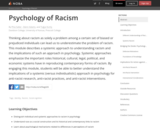
Thinking about racism as solely a problem among a certain set of biased or prejudiced individuals can lead us to underestimate the problem of racism. This module describes a systemic approach to understanding racism and the implications of such an approach in psychology. Systemic approaches emphasize the important roles historical, cultural, legal, political, and economic systems have in reproducing contemporary forms of racism. By engaging this module, students will be able to better understand the implications of a systemic (versus individualistic) approach in psychology for anti-racist research, anti-racist practices, and anti-racist interventions.

What is #Racism in your words?Make your own poem in response to racism.Read the example poem, then explore words that are meaningful to you and write them in each blank space on activity.Español¿Qué es #Racismo en tus palabras?Haz tu propio poema en respuesta al racismo.Lea el poema de ejemplo, luego explore palabras que sean significativas para usted y escríbalas en cada espacio en blanco de la actividad.
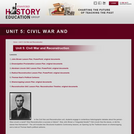
In the Civil War and Reconstruction unit, students engage in contentious historiographic debates about the period--Was Lincoln a racist? Was Reconstruction a success or failure? Was John Brown a "misguided fanatic"? Did Lincoln free the slaves, or did the slaves free themselves? The unit includes two Structured Academic Controversy lessons, an Opening Up the Textbook lesson on sharecropping, and a look at Thomas Nast's political cartoons.

This lesson focuses on early Asian immigrants to the United States, their reasons for immigration, successes they experienced, challenges they faced, and the changing reception they received in their host country. Students will learn what an immigrant is, what it means to be an “American, what the American Dream is, and how primary sources and secondary sources provide varied perspectives that inform a deeper understanding of an event.
2021 Social Science Standards Integrated with Ethnic Studies:
Civics and Government: K.1, 3.2, 5.1
Historical Knowledge: 2.16, 5.22
Historical Thinking: K.17, K.18, 2.22
Social Science Analysis: 1.19, 1.21, 3.18, 3.19, 4.24, 5.27

Unit 8 - Stratification by Race and EthnicityChapter 11 – pages 229 – 247 & 471-4721. What is a “Racial group”? 2. What is an “Ethnic Group”?3. What is a “Minority Group”?4. Stereotypes versus Prejudice versus Discrimination. 5. Theoretical Perspectives on Race and Ethnicity6. Patterns of Intergroup Relations: Genocide, Expulsion, Segregation, Pluralism, Assimilation, Amalgamation7. Race and Ethnicity in the United States (Native Americans, African Americans, Asian Americans, Hispanic Americans, & Arab Americans)8. What is “Environmental Racism”? ( pages 471-472)
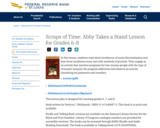
In this lesson, students read about incidences of racial discrimination and how those incidences were met with methods of protests. They engage in an activity that matches programs for low-income people with the type of economic inequity the program addresses and observe an activity simulating tax payments and transfers.
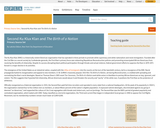
The Ku Klux Klan (KKK) is a historically violent American organization that has operated in three periods to promote white supremacy and white nationalism and resist immigration. Founded after the Civil War as a secret society by Confederate generals, the First Klan’s primary focus was subverting Republican Reconstruction policies and preventing emancipated African Americans from receiving the benefits of citizenship. Despite its success disrupting black political participation through threats and actual violence, federal government efforts to suppress the Klan in 1870-1871 forced in a major decline in its activities.

Asian Americans have been in the U.S. for over 170 years yet common stereotypes and myths persist. Even today, Asian Americans are often regarded as “perpetual foreigners” or the “model minority.” Unfortunately, the Asian American experience is overlooked, forgotten, or misrepresented in history texts and in the K-12 curriculum. The COVID-19 pandemic has evoked a disturbing surge in racist and violent acts targeting Asian American and Pacific Islanders (AAPIs) that has its roots in ignorance, xenophobia, and mistrust. These actions have galvanized the AAPI community into action and promoted solidarity between AAPI and other groups.
2021 Social Science Standards Integrated with Ethnic Studies:
Civics and Government: 5.1, HS.2, HS.9
Geography: 5.13
Historical Knowledge: 6.21, 8.25, HS.52, HS.60, HS.61, HS.64, HS.65
Historical Thinking: 7.25, 8.31, 8.32, HS.69
Social Science Analysis: 5.26, 5.27, 5.28, 5.29, 6.24, 6.26, 6.27, 6.28, 7.29, 7.30, 8.34, 8.36, HS.71, HS.72, HS.73, HS.74, HS.75, HS.76, HS.77, HS.78

This video segment explores how the song Strange Fruit became one of the best-known and most enduring songs of protest. In 1939, the legendary blues singer Billie Holiday performed the song as a daring criticism of the commonplace practice of the lynching of African-Americans. Civil rights groups such as the NAACP had made countless appeals, but it was Holiday’s haunting rendition that made it impossible for white Americans and lawmakers to ignore the widespread crime.
A second video segment includes the story of Abel Meeropol, son of Russian Jewish immigrants and a high school English teacher in the Bronx neighborhood where he was born, wrote a poem entitled Strange Fruit. This video discusses how the poem would later be performed by the legendary Billie Holiday as a song of protest, bringing national attention to the crime of lynching.
https://opb.pbslearningmedia.org/resource/bf09.socst.us.prosp.songborn/abel-meeropol-billie-holiday-and-a-song-born-in-protest/
Sensitive: This resource contains material that may be sensitive for some students. Teachers should exercise discretion in evaluating whether this resource is suitable for their class.

This lesson plan is designed for a 90-minutes-long class with a social struggle issue: racism. Objectives are in alignment with Colombian policies for teaching English as a foreign language and the ICT National Standards for teachers.

HIghlights from Dr. LaGarrett J. Kings recommendations on teaching Black Hiistory.
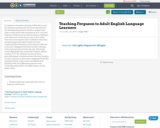
In response to the police shooting of Mike Brown and the numerous protests and civil unrest that followed the shooting and grand jury decision, students were eager to learn about what was going on in St. Louis and Ferguson. Students saw boarded up windows walking to class. Some were afraid and not sure of their safety. They were encouraged to talk to staff about their fears and general personal safety lessons were also reviewed. The following is a story based on what was in the news. Suggested activities include: showing videos and news pictures from the web. Circle key words. Alphabetize key words. Ask students “What’s number 3?, 5?” Etc. Students can also do this in pairs. Worksheet of questions about the story. Students can also read these in pairs when completed. True false worksheet. Cloze of part of the story. Multi-level dictation of the story. Matching pictures to key words. Discussion about civil rights history, racism, police, safety.

Teaching and Learning Iowa History represents a unique way for community members, teachers, and university students to join in the same learning experience with similar goals and curiosities. Whoever you are, we're glad you're here!

This activity helps students understand the injustice and dangers of scapegoating an entire group of people during a national crisis.
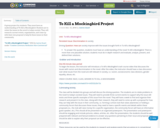
A group project for students. They must have an understanding of To Kill a Mockingbird. Students are to relate the issues in the novel to todays society. They will research current events, organizations, and come up with their own proposal to help fix these issues in their community.

Courses in the Topics in Social Theory and Practice series feature in-depth considerations of such topics with reflections on their implications for social change.
The topic for Fall 2014 is race and racism. We will consider a variety of arguments for and against the biological and / or social "reality" of race—taking into account purported races other than those defined by the black / white binary and the intersection of race with other social categories. We will then consider a number of accounts of racism, contemporary manifestations of racism, and potential counter-measures.

The Trans-Atlantic Slave Trade Database has information on almost 36,000 slaving voyages that forcibly embarked over 10 million Africans for transport to the Americas between the sixteenth and nineteenth centuries. The actual number is estimated to have been as high as 12.5 million. The database and the separate estimates interface offer researchers, students and the general public a chance to rediscover the reality of one of the largest forced movements of peoples in world history.
This resource includes a database of Trans-Atlantic slaving voyages searchable by a wide range of variables in additional to essays, maps, and numerical estimates of the Trans-Atlantic Slave Trade, and K-12 lesson plans.
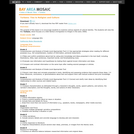
The purpose of this lesson is to encourage students to examine various aspects of cultural identity. The students will view the film Turbans, which focuses on a Sikh family's immigration to Oregon in the early 1900s.